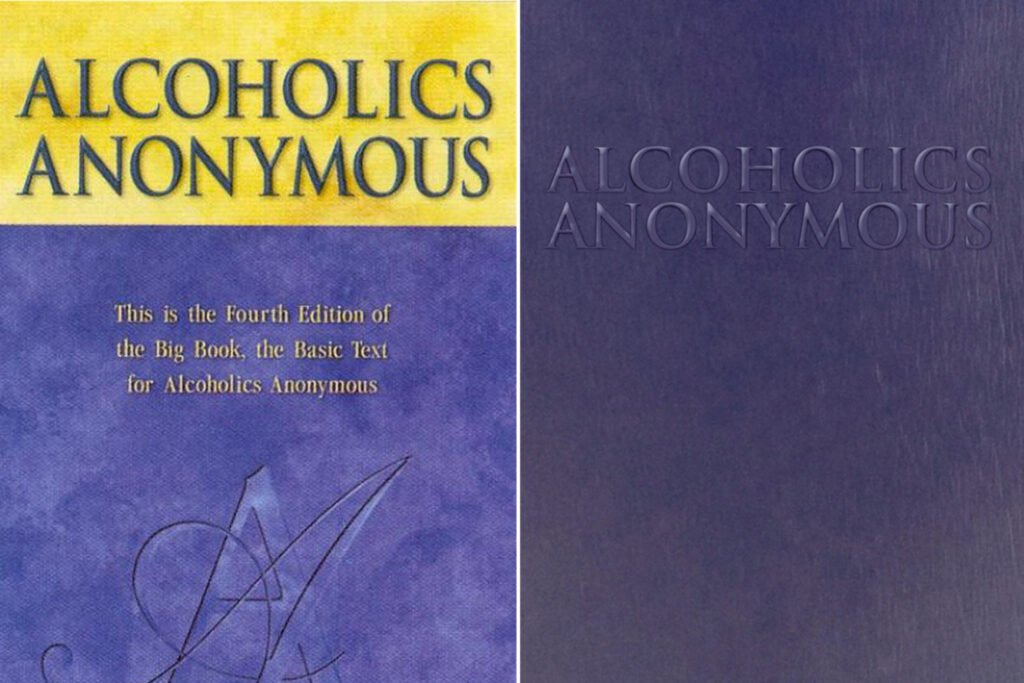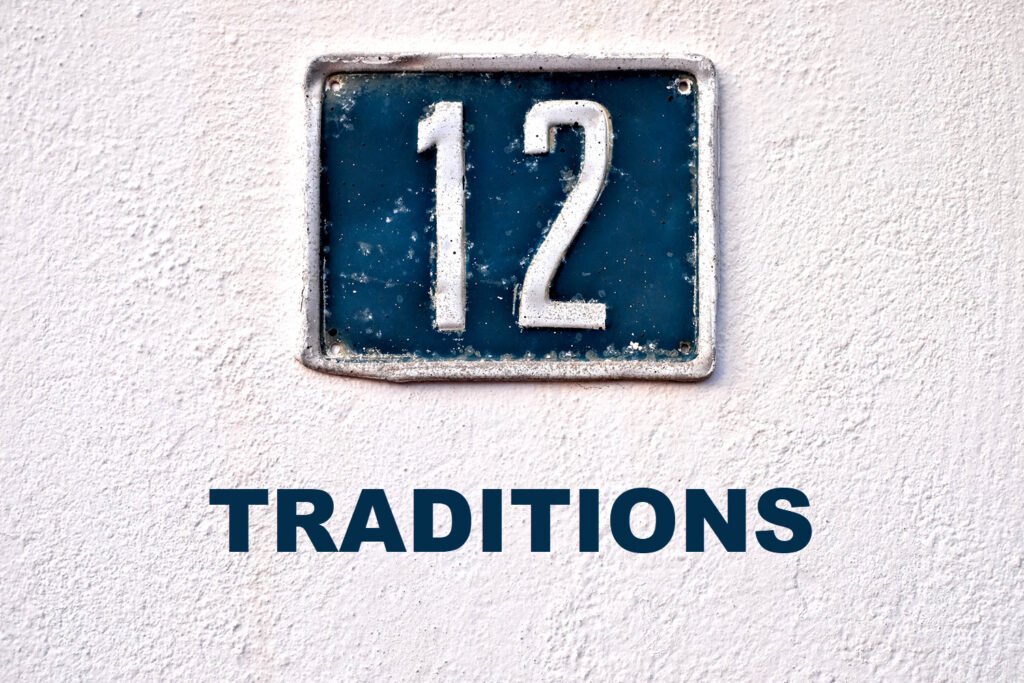What is the Big Book of Alcoholics Anonymous?
Originally titled Alcoholics AnonymousThe original 12-step fellowship, formed in 1935, to help alcoholics, regain control over their lives. It remains the largest 12-step organization and has contributed to the sobriety of millions worldwide. Read more about Alcoholics Anonymous More: The Story of How More Than One Hundred Men Have Recovered from Alcoholism, the first large work released by AA was referred to as “the Big BookThe basic text of AA was the first to methodically introduce the 12-steps. It is still the main source for meetings and is quoted in just about all AA and other 12-step literature. the Library of Congress named it one of the 88 “Books that shaped America.” Read more about the Big Book of AA. More of AA” due to the thickness of the pages used in the first edition.
The most notable contribution of the “Big Book of AA” is the methodical presentation of the vaunted “12-Steps of AA”, the cornerstone of the recoveryThe process by which addicts attempt to break the hold a certain substance or behavior has on their lives. This can refer to participation in a wide variety of methods. What they all have in common, is a sense that life is improving and the addict is regaining control. More of millions of addicts. The “How it Works” chapter, which contains these steps, has since appeared with minor adjustments in the literature of all other related fellowships such as Narcotics Anonymous and Sexaholics Anonymous.
The entire Alcoholics Anonymous program stands and falls on the success of the 12-step concept of recovery presented in that chapter. It is hard to conduct scientific studies of the effectiveness of 12-step programs, due to the anonymityAlcoholics Anonymous and all the 12 step groups modeled after it, protect the anonymity of its members. Members are forbidden from disclosing the identity of other addicts to outside sources or identifying themselves with the group on any form of public media. The idea behind this is to focus on the... More factor. However, those studies that have been conducted have conclusively pointed to its usefulness in fostering recovery.
Why does it work?
The 12-step programA 12 step program includes 12 steps of recovery to help those struggling with substance addictions or behavioral addictions. The 12 steps are also used in programs dedicated to helping loved ones of addicts. 12 step programs include 12 step meetings where members go to share their experience strengt... More is based on a belief that addiction is physical, mental, and spiritual. Therefore, all dimensions must be addressed, in order to aid recovery. To achieve this, the 12-step program combines mutually reinforcing mechanisms into one, taking into account the common human need for meaning and social acceptanceAccepting an inability to cope with addiction alone, is a major part of the recovery process. The same process involves accepting our flaws, responsibility for our actions, and the need to surrender to a Higher Power. More.
Perhaps the most important factor in the 12-step approach to maintaining long-term recovery is the social support provided through fellowshipThis refers to the members of AA and the bonds of support between them. It is this fellowship that allows addicts to share their stories and accept each other in a world that is not always understanding. More. Acceptance by other members in the group alleviates the sense of isolation experienced by addicts in a society which judges and stigmatizes them. This is crucial since isolation, shameFeelings of shame and inadequacy often contribute both to the onset of addiction and its continuation. Addicts also often commit immoral acts, leading to further shame. This leads to a destructive shame-addiction cycle. Breaking the cycle is one of the keys to recovery. More and desperation are highly associated with relapseRelapse in the context of 12-step programs refers to the act of reverting to harmful behaviors associated with addiction after a period of recovery. This return to substance use or compulsive behavior disrupts the recovery process and often leads to a resurgence of destructive patterns that the indi... More.
In addition, the group holds addicts responsible. Perhaps the primary actor in this regard is the sponsor, to whom one can turn for guidance when weakness and temptation prove overwhelming. Finally, the example set by veteran members can be crucial to transforming the desperation of addicts in the early stages of recovery, into hope. Observing first-hand lives put together from the shambles of addiction, with happiness and meaning regained, shows the suffering addictAn individual with an unhealthy dependence on a substance or behavior. An individual remains an addict even years into recovery and must therefore remain active in recovery. Read more about drug & alcohol addiction & withdrawal at Withdrawal Info. More that the 12-steps are not just a dour list on a page, but rather are an attainable roadmap to recovery.
How it Works
“The Big Book of AA” reinforces this process by presenting detailed stories of those who have struggled with addiction. This starts with the first chapter entitled “Bill’s Story,” the story of one of the founders of the organization and his road to recovery. The book includes four further chapters of personal stories.
12-step programs approach the spiritual aspect of addiction by encouraging surrender to a higher power12-step programs greatly stress surrender to and daily communication with a Higher Power. Having trust in something greater than yourself is considered essential for returning sanity in the unmanageable life of an addict. This can be a traditional deity, a spiritual entity or a social one such as th... More. This takes the need for greater meaning human societies have evinced throughout recorded history. Step 3 involves members making “a decision to turn our will and our lives over to the care of God as we understood Him.” Indeed, the role of a Higher Power in this process is so central, that God is mentioned in 6 out of the 12 stepsThe term "12 steps" refers to the core principles of the approach to addiction exemplified by Alcoholics Anonymous and other similar groups. The 12 steps are a set of guidelines designed to help individuals overcome addiction and rebuild their lives. They were created by the founders of Alcoholics A... More. By turning spiritual awakening into a process, the programThis refers to any official course of treatment for addiction. This could be anything from in-patient facilities, to 12-step programs to harm-reduction programs. More is designed to facilitate a steady and gradual progression. This approach is more likely to bring about long-term and lasting relief than a sudden epiphany,
Though not present in the original version of the book, the 12 traditions of AA, are now reprinted in the appendix of every copy. These are mostly organizational precepts, designed at a time when loosely organized AA groups fell prey to disputes over finances, attitudes towards religion and the issue of publicity. The traditions resolved these issues successfully by stressing that “each group has but one primary purpose—to carry its message to the alcoholicAn individual with an unhealthy dependence on alcohol. From the perspective of AA, it is an individual who has lost control over their life due to an inability to stop drinking. More who still suffers.” Therefore, groups should avoid publicity, avoid taking political stands, be open to varying conceptions of a higher power and remain strictly self-financing – thus avoiding the pitfalls of distraction due to involvement in issues unrelated to recovery. These traditions have protected the immense potential of the 12-step program, from falling prey to organizational dysfunction.
Aside from its function in directly aiding recovery, the book also sought to lessen the stigmaEvery addiction carries with it a certain amount of disapproval, which can also lead to discrimination. This is known as stigma. This can vary greatly following the specific addiction. More surrounding addiction. It contains chapters addressing the most important individuals in the lives of addicts, to assist them in managing fallout related to the malady. Chapters designed to be read by wives, family members and employers identify with the challenges they face and are written from their vantage point. The message the book delivered to non-addicts is one of patience and understanding. Each of these units counters the idea that alcoholism reflects the moral failing of the sufferer, replacing it with the message that addiction is a diseaseSome refer to addiction as a disease, comparing it to physical ailments. There are similarities, as both have a detrimental influence on body and soul and are treatable through medical means. More. It encourages the attitude that addicts should be met with an empathetic rather than judgmental attitude.
This effort to reach out to wider society facilitated significant social change in attitudes towards alcoholism and other forms of addiction. 30 Million copies of the book were sold in the decades since the book’s release, consequentially influencing the discourse. In part as a result of the influence of the book and program, the harmful stigma surrounding alcoholism and other forms of addiction significantly diminished. The positive and decisive influence of the “the Big Book of AA” is so widely recognized that the Library of Congress named it one of the 88 “Books that shaped America.” President Richard Nixon, proudly accepted the millionth copy of the “Big Book of AA” in 1973.
Considering its ambitious scope and the manner in which it meets those lofty goals, the contribution of the “Big Book of AA” to improving the lives of addicts and their loved ones, cannot be overestimated. By combining hope and inspiration with structure and support from society and a higher power, the book allows readers to envision, and then attain a future of stability and recovery. Due to its proven utility, the book remains the primary written guide for recovering addicts worldwide more than eighty years after its initial publication.
Where to Purchase the Big Book of Alcoholics Anonymous
The Big Book of AA can typically be purchased at local meetings but it is also available online. Here are a few websites that offer the Big Book for sale:







